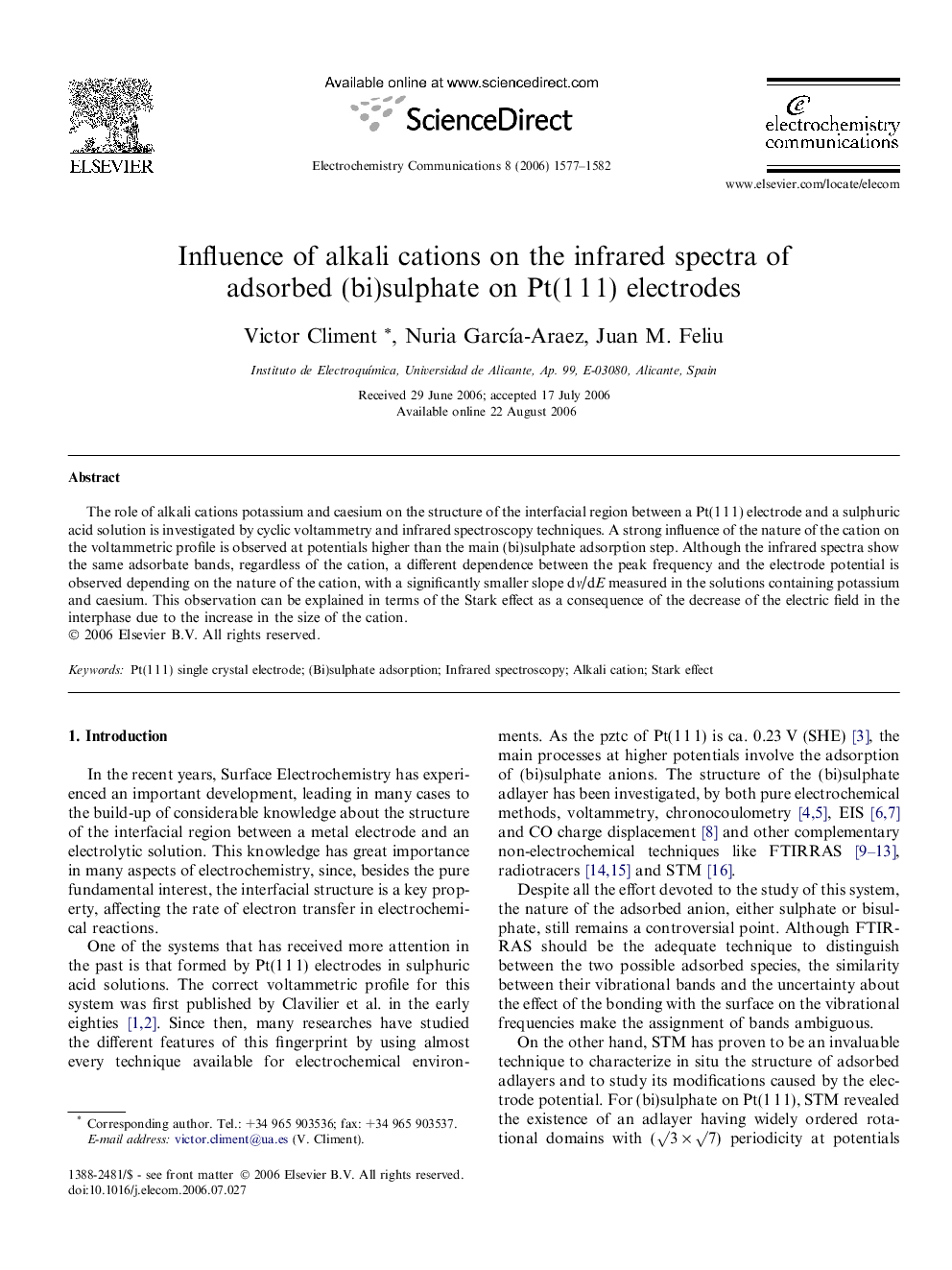| Article ID | Journal | Published Year | Pages | File Type |
|---|---|---|---|---|
| 182411 | Electrochemistry Communications | 2006 | 6 Pages |
The role of alkali cations potassium and caesium on the structure of the interfacial region between a Pt(1 1 1) electrode and a sulphuric acid solution is investigated by cyclic voltammetry and infrared spectroscopy techniques. A strong influence of the nature of the cation on the voltammetric profile is observed at potentials higher than the main (bi)sulphate adsorption step. Although the infrared spectra show the same adsorbate bands, regardless of the cation, a different dependence between the peak frequency and the electrode potential is observed depending on the nature of the cation, with a significantly smaller slope dν/dE measured in the solutions containing potassium and caesium. This observation can be explained in terms of the Stark effect as a consequence of the decrease of the electric field in the interphase due to the increase in the size of the cation.
